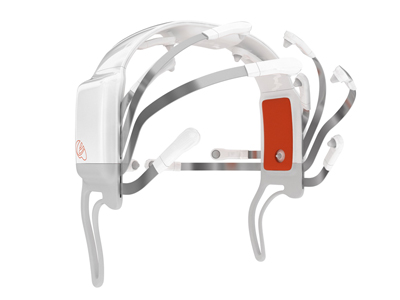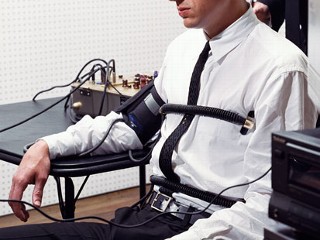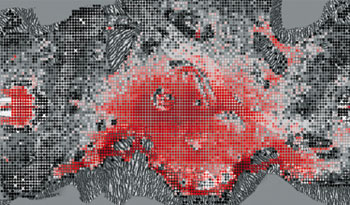 I’ve become very interested in “redesigning the game, after I gather mass of data.”
I’ve become very interested in “redesigning the game, after I gather mass of data.”
(I guess it’d be neat to change a game on the fly while gathering usage feedback, but since the tools I would use aren’t going to be widespread anytime soon – much more interested in iterating on a game which can end up widely distributed).
* This high school chat with Valve’s boss really inspired me:
(Gabe Newell is kind of my modern hero. slightly ahead of steve jobs and john carmack). (I strongly believe the most exciting game design in the industry is happening under the watchful eyes of this “castle of wizards,” called Valve Software).
– about 26 minutes in, he says the main thing Valve is looking for in a potential hire is : showing you can change what you’ve made to match audience feedback.
(He clearly says this is much more valuable, nowadays, than just making an innovative game or gimmick).
Hard for me to describe how this affected me, but… it was practically life changing for me to hear this. Definitely changed my goals for the foreseeable future.
 * In movies, you shouldn’t care what the audience wants, or thinks they want. it’s your art, and fuck them. but in games, you have a notably different relationship with the audience.
* In movies, you shouldn’t care what the audience wants, or thinks they want. it’s your art, and fuck them. but in games, you have a notably different relationship with the audience.
You don’t put out Monopoly and say “oh you don’t like playing it? Don’t even understand how to play it? WELL FUCK OFF, IT IS MY ART!” (for some reason I keep thinking of monopoly & board games)
It’s important to get a zillion people to play your board game before you release it- and necessary to tweak until it’s fun and easy to pick up. Maybe even changing it’s rules and pieces dramatically.
It’s like… games need the player to understand how to engage with them. ? movies/art don’t have to worry about this step. (You instantly know how to engage with a painting – you’re already doing it the moment you start looking at it.). (I don’t think movie test audiences often say “I didn’t know how to view the screen. I probably missed half the movie. not sure.”)
Not saying that games aren’t art. (I think they can be art. In the same way business can be art. in a obscure non-traditional way, that is more about the process than the result). Just think there’s something interesting going on with regard to this… nurturing users into your system of interaction.
…
it’s like sticking your fingers into the the eyeball matter of anyone viewing your painting, and messing around with how they seek to perceive the painting?
If you want them to see the painting, then it’s important you practice on a million people to make sure you’re messing around effectively.???
 * At another point in Newell’s vid chat, he points out how hard it is to trust the feedback you get from customers. He seemed to imply customers are unable to speak the truth, and it is not that useful to interview them after the play session ends. Which made me wonder what the tools are exactly which heavy hitters use for this feedback gathering. He seemed to say the best thing you can do is have game’s developers watch the players. Sure, but what is second best? You can’t get the game’s developers to be present to watch a million people play the game.
* At another point in Newell’s vid chat, he points out how hard it is to trust the feedback you get from customers. He seemed to imply customers are unable to speak the truth, and it is not that useful to interview them after the play session ends. Which made me wonder what the tools are exactly which heavy hitters use for this feedback gathering. He seemed to say the best thing you can do is have game’s developers watch the players. Sure, but what is second best? You can’t get the game’s developers to be present to watch a million people play the game.
So this strikes me as the area to innovate. Specifically: Creating something just as useful as having a game developer there to watch each player.
* I started wondering how I could innovate in “gathering and using User feedback” (instead of innovating in game play/design).
Which reminded me that I’ve seen a lot biometric shit over the years, and have yet to see any of it actually used for anything meaningful. Like, I tried that Emotiv headset at GDC a couple years ago, but it didn’t work for me. Also got a sample NeuroSky headset back when I worked at NaturalPoint, and none of us could get it to work reliably. ie, it just seemed like random useless shit was being detected. Also saw some military simulations thanks to NaturalPoint which gathered player brain activity, head rotation, and pulse rate – but they still had to interview each soldier at the end. They just had a much better idea of which points in the game might be worth discussing (“why did your pulse rate spike at this exact point in the game?”).
(ed: this was at a Serious Games Summit I went to in Washington DC, before that conference was absorbed into GDC. maybe 2007? 2006? I believe the sim was made using Epic Game’s Unreal engine. It let the soldier walk around a village and encounter people, who were voiced by an actor in another room. Can’t remember the name of overpriced head sensor headband they used. At the time I was distracted by the fact that this rinky dink headband, which cost thousands, was using accelerometers instead of precise optical tracking. blah blah. Anyway.).
 I still really don’t know how anyone is using this biometric data they’re already gathering. (How much of it is useless bullshit?)
I still really don’t know how anyone is using this biometric data they’re already gathering. (How much of it is useless bullshit?)
Which reminded me that both Nintendo and Valve have both said biometrics are the future (over the past couple years). Sooo. I trust they must be seeing results internally.
That got me wondering about how I could use biometric feedback, experimenting with it myself, instead of waiting to see what others do. Maybe setup something here at the school where I work.
* So, Mike Ambinder’s talk is my most anticipated at next week’s GDC: http://schedule.gdconf.com/session/12267
(Hoping for some mind blowing insights into how Valve uses the feedback).
p.s. Separately, about 12 minutes into that Newell videoChat, he talks “pricing as a service.” Which is also interesting. I don’t think I really understood “software as a service” until i heard this new similar phrase being explained in detail. Thar be fascinating modern “your relationship with your perspective of reality” ideas mixed in there.
p.p.s I’ve been reading “Storming the reality studio” recently. mind is heavily blown.
p.p.p.s …seems like there’s a scalable triangle here, of: designIntentions – realtimeGameplays – feedbackFollowups. (worried this is old idea. I probably haven’t read the right books which have already covered this arrangement?)
Great post.